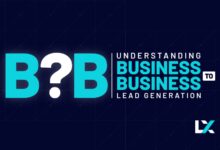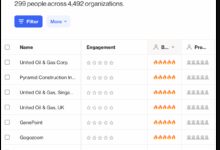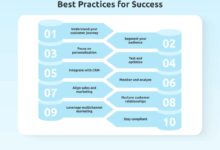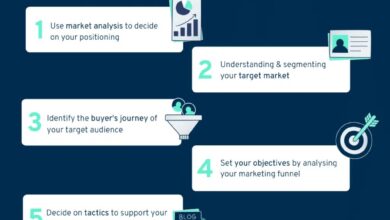B2B Content Automation: 7 Powerful Strategies to Skyrocket Efficiency
In today’s fast-paced digital landscape, B2B content automation isn’t just a luxury—it’s a necessity. Companies leveraging automation are producing higher-quality content faster, engaging prospects more effectively, and scaling their marketing efforts like never before.
What Is B2B Content Automation and Why It Matters

B2B content automation refers to the use of technology and software tools to streamline the creation, distribution, management, and optimization of content specifically designed for business-to-business marketing. Unlike traditional content creation, which relies heavily on manual processes, automation enables marketers to deliver personalized, data-driven content at scale.
Defining B2B Content Automation
At its core, B2B content automation involves using platforms and workflows that reduce repetitive tasks in the content lifecycle. This includes everything from ideation and drafting to publishing, repurposing, and performance tracking. The goal is to eliminate bottlenecks, reduce human error, and increase output without sacrificing quality.
- Automated content generation using AI and NLP
- Dynamic content personalization based on user behavior
- Workflow automation for approvals and publishing
These capabilities are especially critical in B2B environments where decision-making cycles are longer, content needs are more complex, and buyer journeys involve multiple stakeholders.
The Evolution of Content in B2B Marketing
Historically, B2B content was static—whitepapers, case studies, and brochures distributed through direct mail or trade shows. With the rise of digital marketing, content became central to lead nurturing, SEO, and account-based marketing (ABM). However, the volume and velocity required today have made manual content production unsustainable.
According to Content Marketing Institute, 73% of B2B marketers now prioritize content marketing as their top strategy, but only 39% feel effective at it—largely due to resource constraints. This gap is where B2B content automation steps in.
“Automation doesn’t replace creativity—it amplifies it. The future of B2B marketing belongs to those who can scale insight, not just output.” — Ann Handley, Chief Content Officer at MarketingProfs
The Key Benefits of B2B Content Automation
Implementing B2B content automation offers transformative advantages across marketing, sales, and customer success teams. From accelerating time-to-market to improving personalization, the benefits are both quantitative and qualitative.
Increased Efficiency and Scalability
One of the most immediate impacts of automation is the ability to produce more content with fewer resources. Tasks like drafting blog posts, generating social media updates, or creating email sequences can be automated using templates and AI-powered tools.
- Reduce content production time by up to 60% (Source: McKinsey)
- Scale content across multiple channels without increasing headcount
- Enable global teams to collaborate seamlessly through centralized platforms
For example, a SaaS company might use automation to generate region-specific landing pages for different markets, dynamically inserting localized testimonials and pricing—all without manual intervention.
Enhanced Personalization at Scale
B2B buyers expect personalized experiences. A study by Salesforce found that 76% of customers expect consistent interactions across departments, and 73% expect personalization.
B2B content automation enables dynamic content delivery based on firmographics, behavioral data, and engagement history. For instance:
- Automated email campaigns that adapt messaging based on job role (e.g., CTO vs. Procurement Manager)
- Website content that changes based on company size or industry
- AI-driven recommendation engines suggesting relevant case studies or product sheets
This level of personalization was once reserved for enterprise-level budgets, but automation tools have democratized access.
Improved Content Consistency and Brand Governance
In large organizations, maintaining brand voice and messaging consistency across teams and regions is a constant challenge. B2B content automation platforms often include brand management features such as approved tone-of-voice guidelines, content libraries, and compliance checks.
By embedding brand rules into automated workflows, companies ensure that every piece of content—whether generated by a marketer in Berlin or an AI tool in Boston—aligns with corporate standards.
Core Components of a B2B Content Automation Strategy
A successful B2B content automation strategy isn’t just about buying software—it’s about integrating people, processes, and technology into a cohesive system. Let’s break down the essential components.
Content Ideation and Planning Automation
Even the best automation tools fail if they’re not fed the right ideas. AI-powered content intelligence platforms can analyze search trends, competitor content, and customer queries to suggest high-potential topics.
- Tools like Clearscope and MarketMuse use natural language processing to identify content gaps
- Automated topic clustering helps organize content around buyer personas and journey stages
- Integration with CRM and support data reveals real customer pain points
For example, if customer service logs show frequent questions about API integration, the system can automatically flag this as a priority topic for a new guide or video series.
AI-Powered Content Creation
Generative AI has revolutionized content creation. Platforms like Jasper, Copy.ai, and Writesonic can draft blog posts, email sequences, and social media content in seconds—based on brand voice and SEO guidelines.
However, in B2B contexts, human oversight remains crucial. AI-generated content should be reviewed for technical accuracy, compliance, and strategic alignment.
- Use AI to create first drafts, not final deliverables
- Train models on existing high-performing content to maintain consistency
- Leverage AI for multilingual content translation and localization
When done right, AI can cut content creation time by 40–50%, freeing up writers to focus on strategy and complex narratives.
Workflow and Approval Automation
One of the biggest bottlenecks in B2B content is the approval process. Legal, compliance, product, and executive teams often need to review content—leading to delays.
Automation platforms like Adobe Workfront or Asana can route content through predefined approval workflows, send reminders, and track version history.
- Set up conditional routing (e.g., only legal review if financial claims are made)
- Integrate with Slack or Teams for real-time notifications
- Automate publishing once all approvals are received
This reduces time-to-publish from weeks to days, ensuring timely responses to market opportunities.
Top Tools and Platforms for B2B Content Automation
The market for B2B content automation tools is growing rapidly. Choosing the right stack depends on your goals, team size, and integration needs.
AI Writing Assistants
These tools help generate and optimize content quickly while maintaining brand voice.
- Jasper: Ideal for long-form content, email sequences, and ad copy. Offers templates for B2B use cases like whitepapers and pitch decks.
- Copy.ai: Great for brainstorming and generating social media content. Integrates with Slack and Google Docs.
- Writesonic: Features AI-powered blog post generation with SEO optimization.
These tools are particularly useful for scaling content production without hiring additional writers.
Content Operations Platforms
These platforms manage the entire content lifecycle—from planning to performance.
- DivvyHQ: Combines editorial calendars, workflow automation, and content performance tracking.
- CoSchedule: Offers marketing calendar integration, task management, and AI-powered subject line optimization.
- ClickUp: A versatile project management tool that can be customized for content teams with automation rules and dashboards.
They help align content with business goals and ensure accountability across teams.
Personalization and Dynamic Content Engines
For advanced personalization, these tools dynamically alter content based on user data.
- HubSpot: Offers smart content features that show different versions of web pages or emails based on visitor attributes.
- Dynamic Yield (acquired by Amazon): Enables real-time personalization across websites, email, and apps.
- Optimizely: Provides A/B testing and experimentation for content variations.
These are essential for ABM campaigns where messaging must be tailored to specific accounts or personas.
How B2B Content Automation Fuels Account-Based Marketing (ABM)
Account-based marketing relies on hyper-personalized content for high-value prospects. B2B content automation makes this scalable.
Creating Custom Content for Target Accounts
Automation allows marketers to generate custom landing pages, case studies, and email sequences for specific accounts.
- Use CRM data to auto-generate case studies featuring similar companies in the same industry
- Create personalized video messages using tools like Vidyard or Signed
- Automate direct mail campaigns with personalized URLs and QR codes
For example, a cybersecurity firm can automatically generate a custom threat report for a financial services prospect, pulling in real-time data and industry benchmarks.
Orchestrating Multi-Channel Campaigns
B2B content automation enables synchronized messaging across email, social, web, and ads.
- Trigger LinkedIn ad campaigns when a target account visits a pricing page
- Send a sequence of automated emails with progressively deeper content (e.g., blog → whitepaper → demo offer)
- Use chatbots to deliver personalized content based on visitor behavior
This creates a cohesive, omnichannel experience that nurtures prospects through the funnel.
Measuring ABM Content Performance
Automation platforms provide detailed analytics on content engagement at the account level.
- Track which pieces of content are viewed by key decision-makers
- Measure time-on-page, downloads, and video views per account
- Integrate with Salesforce to link content engagement to pipeline velocity
This data helps refine future content and prove marketing’s impact on revenue.
Overcoming Common Challenges in B2B Content Automation
Despite its benefits, B2B content automation comes with challenges. Addressing them proactively is key to success.
Maintaining Quality and Authenticity
One concern is that automated content may feel generic or lack depth. This is especially risky in B2B, where technical accuracy and thought leadership matter.
- Always include human review stages for high-stakes content
- Use automation for repetitive, low-complexity tasks (e.g., social posts, email reminders)
- Invest in training AI models on your best-performing content
The goal is augmentation, not replacement.
Data Privacy and Compliance Risks
Automated personalization relies on customer data, which raises GDPR, CCPA, and other compliance concerns.
- Ensure your automation tools are GDPR-compliant
- Obtain explicit consent before using personalization features
- Audit data usage regularly and limit access to sensitive information
Transparency builds trust—and protects your brand.
Integration with Existing Tech Stacks
Many companies struggle to connect automation tools with their CRM, CMS, or marketing platforms.
- Prioritize tools with strong API support and pre-built integrations
- Use middleware like Zapier or Workato to bridge gaps
- Start with a pilot project before full-scale rollout
Integration is not a one-time task—it requires ongoing maintenance and optimization.
The Future of B2B Content Automation: Trends to Watch
The landscape of B2B content automation is evolving rapidly. Staying ahead requires awareness of emerging trends.
AI-Driven Content Optimization
Future tools won’t just create content—they’ll optimize it in real time. Imagine a blog post that automatically rewrites its headline, adjusts tone, or inserts new data based on performance metrics.
- AI will predict which content formats perform best for specific audiences
- Automated A/B testing will become standard
- Content will self-optimize for SEO, readability, and engagement
Platforms like Fractl are already experimenting with predictive content modeling.
Voice and Video Automation
As video becomes central to B2B marketing, automation will extend to video production.
- AI-generated avatars for personalized video messages
- Automated subtitling, translation, and editing
- Dynamic video content that changes based on viewer data
Tools like Synthesia and Pictory are leading this shift.
Hyper-Personalization Through Predictive Analytics
The next frontier is predicting what content a buyer needs before they ask for it.
- Machine learning models will analyze past behavior to forecast content preferences
- Automated content journeys will adapt in real time based on engagement
- Integration with intent data providers (e.g., Bombora, G2) will enhance targeting
This moves B2B marketing from reactive to proactive.
Getting Started with B2B Content Automation: A Step-by-Step Guide
Ready to implement B2B content automation? Follow this practical roadmap.
Assess Your Current Content Workflow
Map out your existing process from ideation to distribution. Identify bottlenecks, redundancies, and manual tasks.
- Conduct interviews with content creators, marketers, and sales teams
- Document average time spent on each stage
- Identify high-volume, repetitive tasks ideal for automation
Define Your Goals and KPIs
What do you want to achieve? Common goals include:
- Reduce content production time by 30%
- Increase content output by 50% without adding staff
- Improve engagement rates (CTR, time-on-page) by 25%
Set measurable KPIs to track progress.
Choose the Right Tools
Start small. Pick one or two tools that address your biggest pain points.
- For ideation: MarketMuse or Clearscope
- For creation: Jasper or Copy.ai
- For workflow: CoSchedule or Asana
Ensure they integrate with your existing tech stack.
Train Your Team and Establish Governance
Automation requires cultural change. Provide training on new tools and set clear guidelines for usage.
- Define who can generate AI content and under what conditions
- Establish brand voice and compliance rules
- Create a feedback loop for continuous improvement
Launch, Measure, and Optimize
Run a pilot campaign—e.g., automate a blog series or email nurture sequence.
- Compare performance against manual processes
- Gather feedback from team and audience
- Iterate and scale based on results
Remember: automation is not a one-time project but an ongoing optimization journey.
What is B2B content automation?
B2B content automation uses technology to streamline the creation, management, and distribution of business-to-business marketing content. It leverages AI, workflows, and data to produce personalized, scalable content efficiently.
How does B2B content automation improve marketing efficiency?
It reduces manual tasks, accelerates production timelines, enables personalization at scale, and ensures brand consistency. This allows marketing teams to focus on strategy rather than execution.
Can small B2B companies benefit from content automation?
Absolutely. Many automation tools are affordable and scalable. Even small teams can use AI writing assistants and workflow tools to punch above their weight in content output and engagement.
Is AI-generated content effective for B2B marketing?
Yes, when used responsibly. AI excels at drafting, ideation, and repurposing. However, human oversight is essential for technical accuracy, brand alignment, and strategic messaging—especially in complex B2B industries.
What are the risks of B2B content automation?
Risks include loss of authenticity, compliance issues with data privacy, and over-reliance on technology. These can be mitigated with strong governance, human review processes, and ethical data practices.
B2B content automation is no longer a futuristic concept—it’s a present-day imperative. By automating repetitive tasks, enhancing personalization, and scaling content production, businesses can stay competitive in an information-saturated market. The key is to implement automation strategically, with clear goals, the right tools, and a focus on augmenting human creativity—not replacing it. As AI and data analytics continue to evolve, the companies that master B2B content automation will lead the next wave of marketing innovation.
Further Reading:






